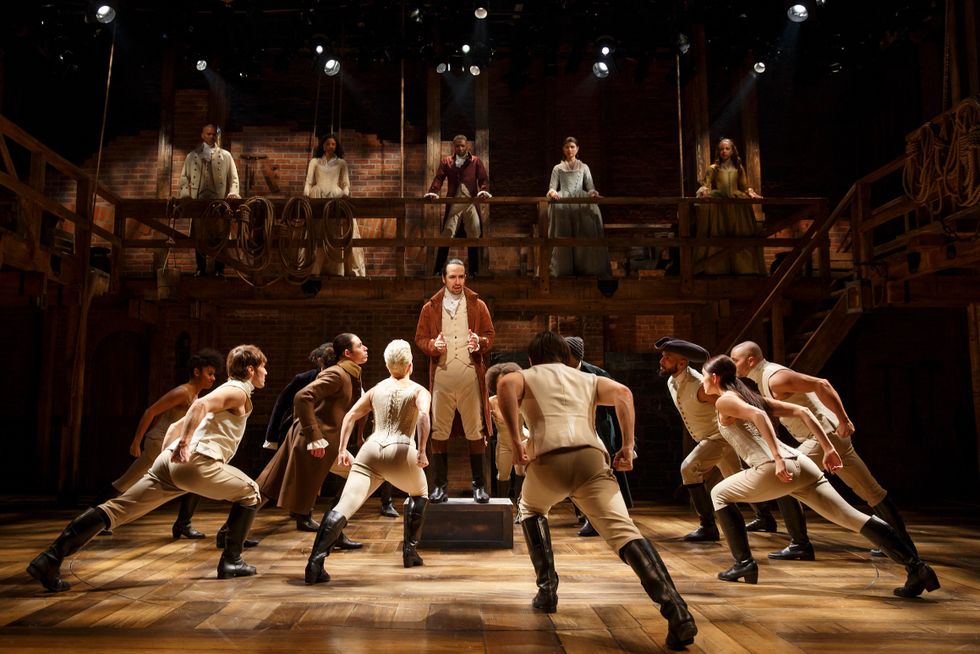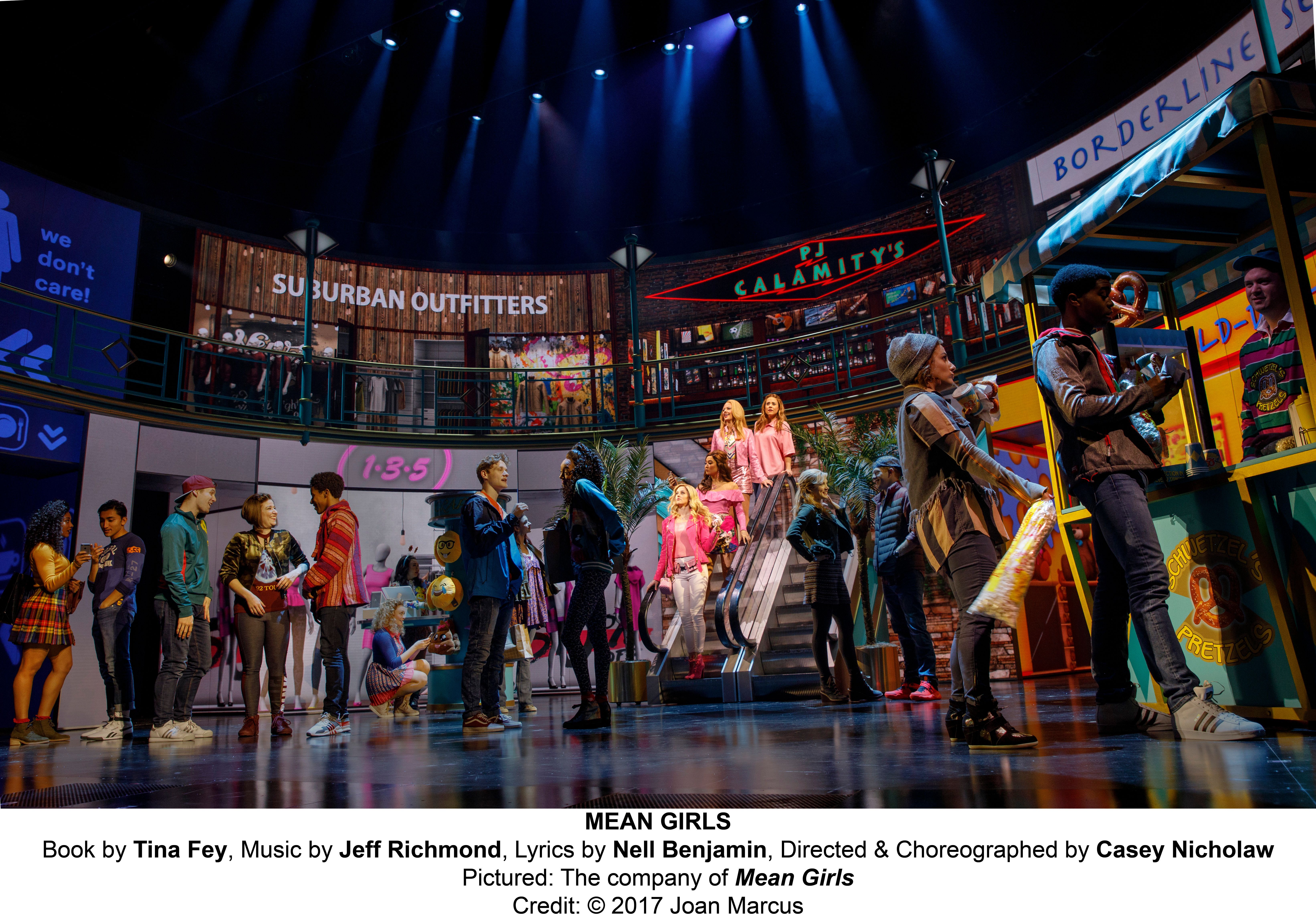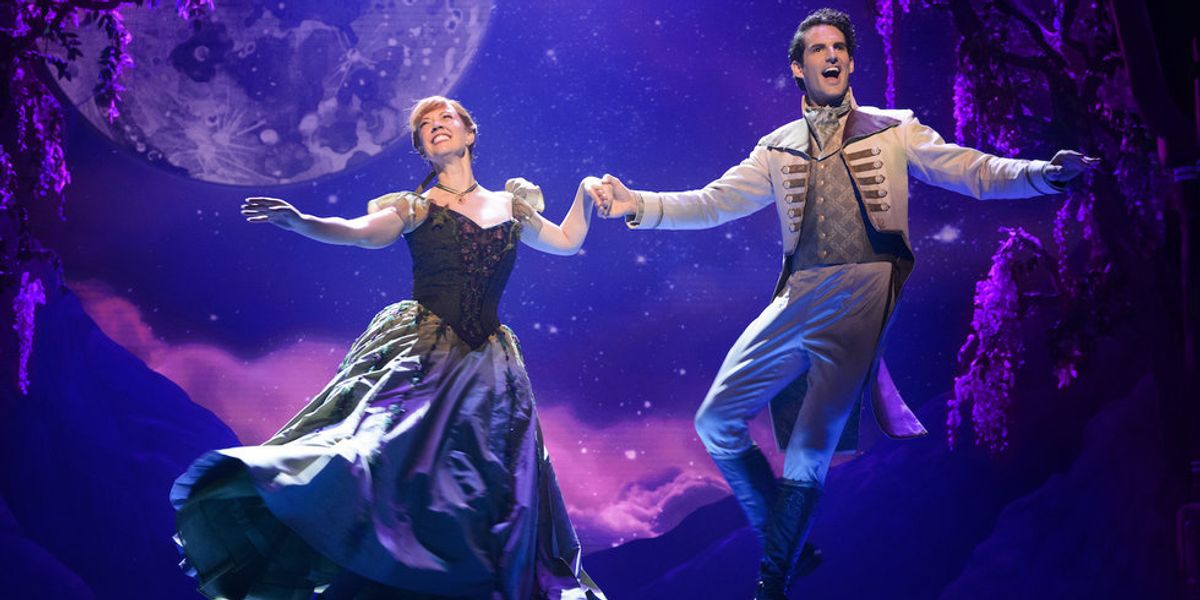The New Agreement Recognizing Dancers' Creative Contributions on Broadway
For a Broadway dancer, few opportunities are more exciting than being part of the creation of an original show. But if that show goes on to become wildly successful, who reaps the benefits? Thanks to a new deal between Actors’ Equity Association and The Broadway League, performers involved in a production’s development will now receive their own cut of the earnings.
The new agreement, which was made in February, means actors and stage managers will get paid more for their participation in labs and workshops. And, after the show recoups its initial investment, they will split 1 percent of the profits (including any touring productions), for up to 10 years.

Lin-Manuel Miranda and the cast of Hamilton
Joan Marcus, Courtesy Hamilton
Traditionally, performers were paid $1,000 per week for being part of a developmental workshop, but those payments ended when the workshop did. Many began to feel that this wage no longer reflected the contributions they were making.
“The salaries on the lab agreement had not shifted in 10 years, and the landscape of developing shows had shifted significantly during that period,” says Stephen Bogardus, an actor and the chair of Equity’s show development committee. “When we go into a rehearsal room, we’re giving our ideas to the creative team. We were being leaned on more and more for our contributions, and that wasn’t recognized.” When a show becomes profitable, the union argued, the artists who helped create it (even if they were only involved in the early stages) should reap some of the rewards.
The push for profit-sharing began gaining momentum in 2016, when Hamilton became a Broadway blockbuster and the original cast struck a deal with producers to receive a percentage of the earnings. Since then, some productions, like Mean Girls and Frozen, have voluntarily put profit-sharing arrangements in place.

Mean Girls
Joan Marcus, Courtesy Boneau/Bryan-Brown
The conversation came to a head in January, when Equity members went on a monthlong strike from developmental work. According to the union, it was their largest member mobilization effort in decades. They held 52 cast meetings with both Broadway and touring shows, and more than 3,000 working Equity members signed commitment cards to show their support.
As Broadway shows become more daring and complex, the demands placed on dancers—particularly ensemble members—are only increasing. As Bogardus points out, the new agreement will particularly affect those artists who receive the lowest wages on Broadway. “I don’t think anybody works harder than the ensemble,” he says. “No one deserves it more than them.”




